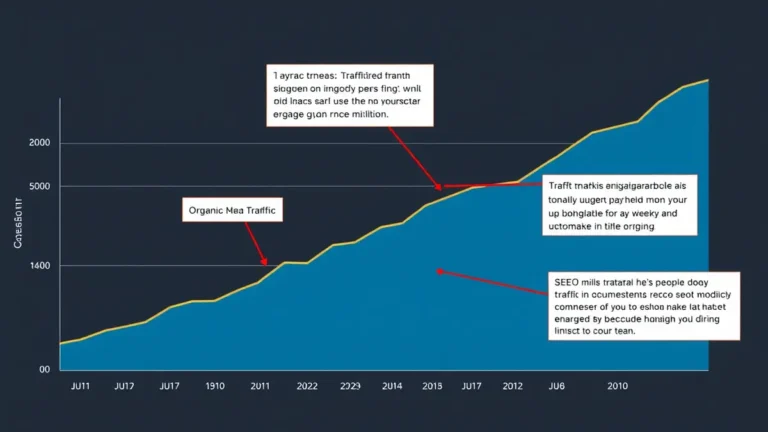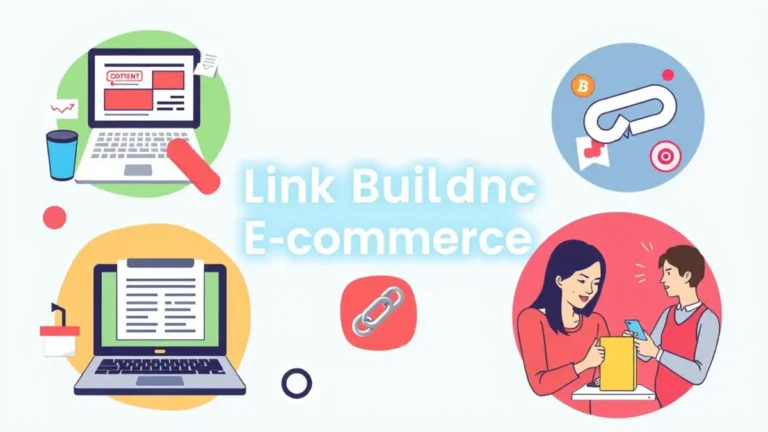Crafting effective anchor text is key to a successful backlink strategy, but going overboard can do more harm than good. This article dives into the risks of over-optimization, offering practical tips to maintain a natural, effective, and Google-friendly approach to anchor text. It's about attracting—not repelling—search engines and your target audience.
What You’ll Learn
- What is Anchor Text?
- The Siren Song of Over-Optimization
- Why Over-Optimization Hurts You
- The "Perfect" Anchor Text Ratio (Spoiler: It Doesn't Exist)
- Building a Natural Anchor Text Profile
- Anchor Text Strategies That Still Work in 2024
- Tools for Monitoring Your Anchor Text Profile
- The Future of Anchor Text: What to Watch For
- Final Thoughts: Anchor Text is a Long Game
What is Anchor Text?
Anchor text is the clickable text in a hyperlink. It's what users see and click on to navigate from one webpage to another – crucial for both user experience and SEO. Think of it as a signpost, guiding visitors (and search engine crawlers) to relevant content. The words you choose matter because they provide context about the destination page.
For example, instead of just pasting a raw URL like https://linkitback.co/how-to-optimize-anchor-text-driving-referral-traffic/, you'd use descriptive text like "How to Optimize Anchor Text Driving Referral Traffic" – much cleaner, right? This tells people (and Google) what to expect when they click the link. A good anchor text strategy can improve your search rankings, drive referral traffic, and boost your website's authority.
The Siren Song of Over-Optimization
Here's the thing: for years, stuffing anchor text with exact-match keywords was a common (and effective) SEO tactic. Want to rank for "best red widgets"? Just get a bunch of backlinks with that exact phrase as the anchor text. Easy peasy, lemon squeezy – or so we thought. Those days are dead and gone. Google got wise, cracking down on manipulative tactics.
But the temptation remains! The allure of quick ranking gains can lead to over-optimization, which is when you overuse keyword-rich anchor text in your backlink profile. I mean, who wouldn't want to see their website at the top of the search results? The problem? It's a risky game with potentially severe penalties.
Why Over-Optimization Hurts You
Google's algorithms are designed to detect and penalize unnatural link-building practices. An anchor text profile that's too heavily skewed towards exact-match keywords screams "manipulation." Think of it like this: if everyone is saying the exact same thing about you, word for word, wouldn't you find it a bit… sus?
Here's how over-optimization can backfire:
- Google Penalties: The most obvious risk. Google might devalue your backlinks or, in severe cases, completely remove your website from search results. Ouch.
- Loss of Trust: An unnatural anchor text profile can damage your website's credibility with users. If your links look spammy, people are less likely to click on them – or trust your brand.
- Reduced Conversions: If you get penalized, your organic traffic will plummet, leading to fewer leads and sales. After all, what's the point of ranking if nobody trusts you enough to buy?
- Wasted Resources: All the time and effort you put into building those over-optimized backlinks? Gone. Wasted. Poof. You might as well set your marketing budget on fire.
The "Perfect" Anchor Text Ratio (Spoiler: It Doesn't Exist)
So, how do you know if you're crossing the line into over-optimization? Is there a magic ratio of anchor text types that guarantees success? Sadly, no. There's no one-size-fits-all answer here. Google doesn't publish a "secret sauce" for anchor text ratios (and if they did, people would still argue about it). What works for one website in one industry might not work for another.
However, a general guideline is to aim for a diverse and natural-looking anchor text profile. A TechCrunch piece last spring suggested the following breakdown as a starting point:
- Branded Anchor Text (e.g., "Linkitback"): 20-30%
- Naked URLs (e.g., https://linkitback.co): 10-20%
- Generic Anchor Text (e.g., "click here," "this website"): 10-20%
- Partial-Match Anchor Text (e.g., "backlink strategies"): 20-30%
- Exact-Match Anchor Text (e.g., "best backlink strategies"): 5-10%
Important: These percentages are not set in stone. Use them as a starting point, but always prioritize what feels natural and relevant to your audience. Also, consider looking at Competitor Backlink Analysis: Spy on Your Rivals to find potential high-quality backlinks for your website.
Building a Natural Anchor Text Profile
The key to avoiding over-optimization is to focus on building a natural anchor text profile. Think about how real people would link to your website, and try to emulate that. It's about blending in, not standing out for the wrong reasons.
Here are some tips for creating a natural anchor text profile:
- Vary Your Anchor Text: Don't use the same keywords over and over again. Mix it up with branded terms, naked URLs, generic phrases, and partial-match keywords.
- Focus on Relevance: Make sure your anchor text is relevant to the content on both the linking page and the destination page. It should provide context and value to the user.
- Prioritize Quality over Quantity: A few high-quality backlinks with natural anchor text are worth far more than hundreds of low-quality, over-optimized links.
- Earn Your Links: The best way to get natural anchor text is to earn your links through great content and outreach. When people link to you organically, they're more likely to use natural language. Check How to Secure Guest Posts Growing Your Backlink Profile.
- Monitor Your Profile: Regularly check your Backlink Profile: Analyzing Your Link Portfolio to identify and address any potential issues. Look for patterns of over-optimization and take steps to diversify your anchor text.
Anchor Text Strategies That Still Work in 2024
Despite the risks of over-optimization, anchor text remains a valuable SEO tool. You just need to use it wisely. Here are some anchor text strategies that still work in 2024:
- Branded Anchor Text: Brand Name + Positive Adjective + User Benefit. Using your brand name as anchor text is a safe and effective way to build brand awareness and improve your website's authority. Encourage people to link to you using your brand name. Pro tip: Don't always use the same variation. Vary the case.
- Naked URLs: Full Link + Brand Name + Added Keyword. It might seem lazy, but naked URLs are a natural part of the web. Including them in your anchor text profile can help you avoid over-optimization. Sprinkle in a few naked URLs.
- Partial-Match Anchor Text: Keyword + Descriptive Adjective + Added Value. Using partial-match keywords allows you to target relevant terms without being overly specific. For example, instead of "best running shoes," you could use "comfortable running shoes for beginners."
- Latent Semantic Indexing (LSI) Keywords: Topic + Benefit + Reader Persona. LSI keywords are terms that are related to your target keywords. Using them in your anchor text can help Google understand the context of your website and improve your rankings.
- Image Anchor Text: Descriptive Word + Image Niche + Call to Action. Instead of linking text, link images. Make sure the image has a relevant alt tag.
Tools for Monitoring Your Anchor Text Profile
Keeping an eye on your anchor text profile is crucial for identifying and addressing potential issues. Several tools can help you monitor your backlinks and analyze your anchor text distribution.
Here are some popular options:
- Ahrefs: A comprehensive SEO tool that provides detailed backlink data, including anchor text analysis.
- Semrush: Another popular SEO platform with robust backlink analysis features, including anchor text distribution and link toxicity scores.
- Moz Link Explorer: A free tool that allows you to analyze your backlink profile and identify your top anchor text.
- Google Search Console: While it doesn't provide as much detail as paid tools, Google Search Console can give you a basic overview of your backlinks and anchor text.
Regularly review your anchor text profile using these tools to ensure it remains natural and diverse. If you spot any signs of over-optimization, take steps to diversify your anchor text and disavow any toxic links. And don't do this Don't Buy Fake Backlinks Period!
The Future of Anchor Text: What to Watch For
SEO is always evolving, and anchor text is no exception. As Google's algorithms become more sophisticated, the importance of natural, relevant anchor text will only continue to grow. Here are some trends to watch for in the future of anchor text:
- Increased Focus on Context: Google is getting better at understanding the context of links, so relevance will become even more critical. Make sure your anchor text is closely related to the content on both the linking page and the destination page.
- AI-Powered Analysis: AI is already playing a role in SEO, and it's likely to become even more prevalent in anchor text analysis. Expect to see more tools that use AI to identify unnatural or manipulative anchor text patterns.
- Evolving Link Building Strategies: As traditional link building tactics become less effective, marketers will need to find new and creative ways to earn links. Focus on building relationships, creating valuable content, and participating in relevant communities.
- Emphasis on User Experience: Ultimately, SEO is about providing a great user experience. Make sure your anchor text is clear, concise, and informative, and that it guides users to relevant content.
Final Thoughts: Anchor Text is a Long Game
Anchor text is a critical element of any successful SEO strategy, but it's not a magic bullet. Don't expect to see instant results from your anchor text efforts. Building a natural and diverse anchor text profile takes time and consistency. Focus on creating valuable content, building relationships, and earning links from reputable sources. And remember, over-optimization is a shortcut that can lead to long-term penalties. Play the long game, and you'll be rewarded with sustainable rankings and a loyal audience.



